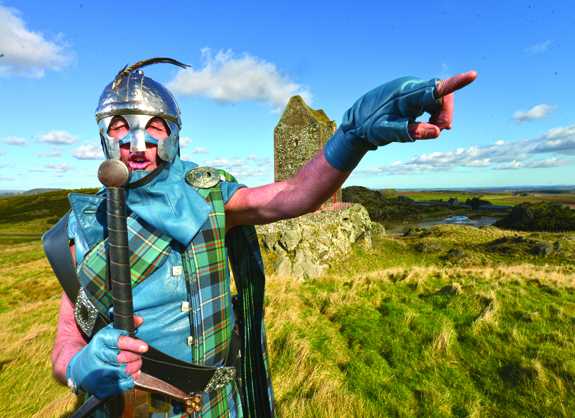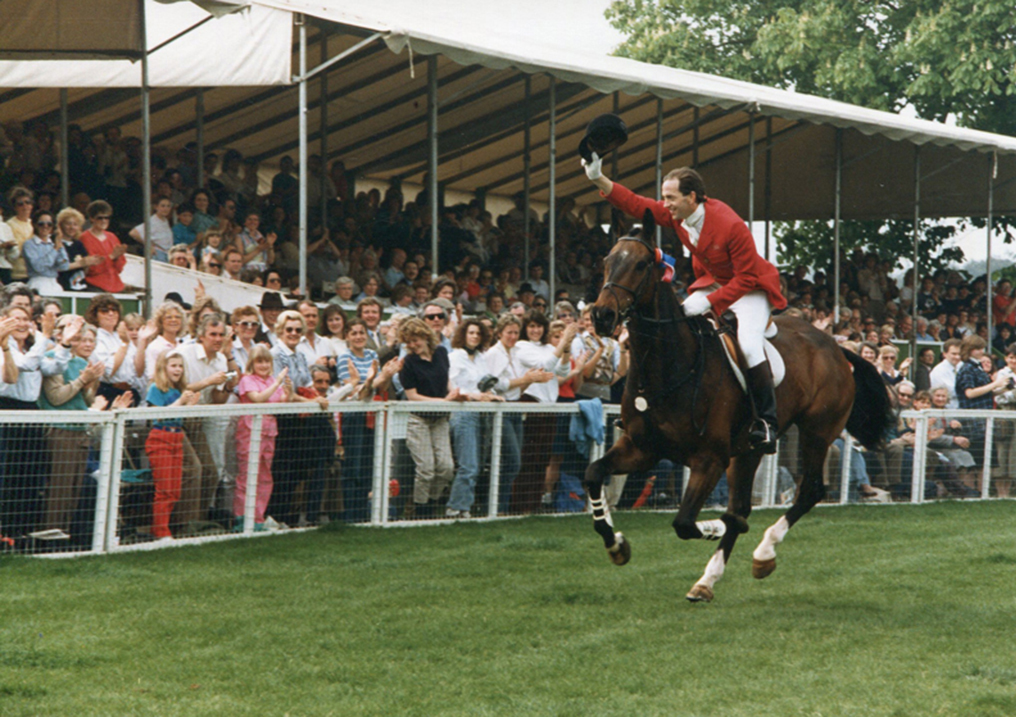Five-time Olympian, former European champion, three-time Badminton winner: Ian Stark is an equestrian legend.
Since stepping back from the competition circuit in 2007, he has carved out a highflying career in course design, with three-star courses for Chatsworth, Bramham and Tattersalls under his belt, as well as a course for the European Championship at Blair Castle.
Ian has a reputation among riders as a creator of big, fast, terrifying tracks that put the emphasis on scope and speed, harking back to his roots in point-to-point and hunting. This was a conscious decision, he says.
‘I didn’t like the way the sport was going, turning into what I’d call an arena event. The courses were twisty and turny; horses doubling back, circling. It’s not necessarily the attitude I want them to have. My approach was to try and get some of the old-fashioned, big, scary Badminton-style courses, you know – from the 1980s – and have it much more attacking, but also to bring in a little of the technical, the skinnies and that sort of thing, too.’
The work is satisfying but nerveracking.
‘I always talk about that Saturday-morning stomach feeling when you’re competing; when you get up on Saturday and you’re just in knots. It gets worse and worse and worse, and then you get on a horse and it goes away.
‘Well, when you’re designing, it gets worse and worse, and you haven’t got a horse to get onto, so it doesn’t go away. If your first half-dozen riders have problems, you’re just tearing your hair out. Then, of course, someone comes along inside the time and goes clear and you think: “Ah! It is possible!”’
He made it onto the shortlist of designers for the 2020 Olympics in Tokyo, but was disappointed not to get the gig, which went to Derek di Grazia, the Kentucky CCI4 designer.
‘As my daughter was helping me fill in the forms I said, “I think we’re pricing ourselves out of the market.” To go all the way to Tokyo – that’s three or four visits a year, for four years. And as I’m getting a bit old and fuddy-duddy I like to turn left on the plane, not right.’

Ian Stark with his wife Jenny, in Selkirk
Business-class flights to Tokyo add up quickly. He nods. ‘Yeah, I was annoyed not to get it, but I wasn’t too concerned. Without being rude, the Olympics are a three-star event, and I’d much rather hang around and maybe get Badminton or Burghley one day. But’ – he opens his hands wide – ‘if it doesn’t happen, it’s not the end of the world. I’m loving what I’m doing.
‘I’ve got my designing, I’ve got my racing, I’ve got my BBC commentating, and we’ve got our equestrian centre at home. So I’ve got a real variety, which is very spoiling.’
The Ian Stark Equestrian Centre outside Selkirk opened in 2013. It’s a family affair, run largely by his wife Jenny, but staffed too by his son Tim and daughter Stephanie on occasion.
It’s effectively a continuation of the riding school business that Jenny had run from her late sister’s farm over the hill at Dryden, but with top-of-therange facilities including a competition-size indoor arena, outdoor manège and practice cross-country course.
It has made a difference to young Scottish riders who struggle to get enough competition experience close to home, and provides a base at which lots of top riders can teach.
‘I did think for a while when we built the indoor school it might turn out to be the world’s most expensive cattle barn, but it’s incredibly popular and that’s what we wanted. We wanted it to be our legacy to the area.’
Ian teaches when he can, although it’s hard to squeeze it in around course designing and the time he devotes to horse-racing: between 35 and 40 days’ stewarding a year, plus trips to London to sit on the sport’s disciplinary panel.

Ian riding Sir Wattie at Badminton in 1988
He has always loved racing and even when eventing tended to opt for thoroughbreds. ‘I bought some at Doncaster bloodstock sales for three and four-year-olds, or store horses that were unbroken.’ He selected them based on a sort of intuition, rejecting some in seconds, ‘as soon as they looked out over their stable door’.
Similarly, when he spotted Full Circle II, his last four-star horse, across a crowded collecting ring, he knew he had to have him.
Speed is of the essence in everything he does. ‘When I started flying, I was very lucky to go down to RAF Anglesey where a friend of mine who was an instructor there got me a flight in a Hawk. I did a day’s training and then I went up in the Hawk, and I managed to do backward flips, rotationals at 500mph, 500ft off the ground…’
It all sounds very dangerous to me, as does his extreme skiing habit. ‘I have had a lot of injuries but, touch wood, I’ve been quite lucky. I mean, yeah, I broke my neck and I’ve broken lots of bones, but my big fear has never been dying, it’s of being left incapable. I tease my wife – what she’s got to do when I meet my parallels, as they say. She says, “Well, how can I help?” And I say, “Just push me off a cliff!”’
Let’s hope it never comes to that.
Ian Stark’s career highlights:
1, At the 1984 Olympic Games in Los Angeles, Ian rode Oxford Blue, winning silver for Team eventing.
2, In 1985, he won a Team gold at the European Championships at Burghley.
3, Gold again in Team eventing at the 1986 World Championships. He also had the first of three Badminton Horse Trials wins this year, riding Sir Wattie.
4, At the Seoul Games of 1988, Ian picked up two silver medals; he won again at Badminton on Sir Wattie; he also came second on Glenburnie – a still-unmatched achievement.
5, Ian was made an MBE for services to equestrianism in 1989, as well as picking up another gold medal at the European Championships for Team eventing.
6, In 1991, he won two golds in the European Eventing Championships.
7, Ian won Badminton for the third time in 1999 with Jaybee.
8, He was made an OBE in 2000, and picked up Team silver at the Olympics.
9, From 2001 to 2012, Ian was a selector for the British team.
10, In 2005, Ian started designing cross-country courses, and now designs throughout Britain, Ireland and the US.
11, In 2015, Ian designed the cross-country course for the European Eventing Championships at Blair Castle.
TAGS

